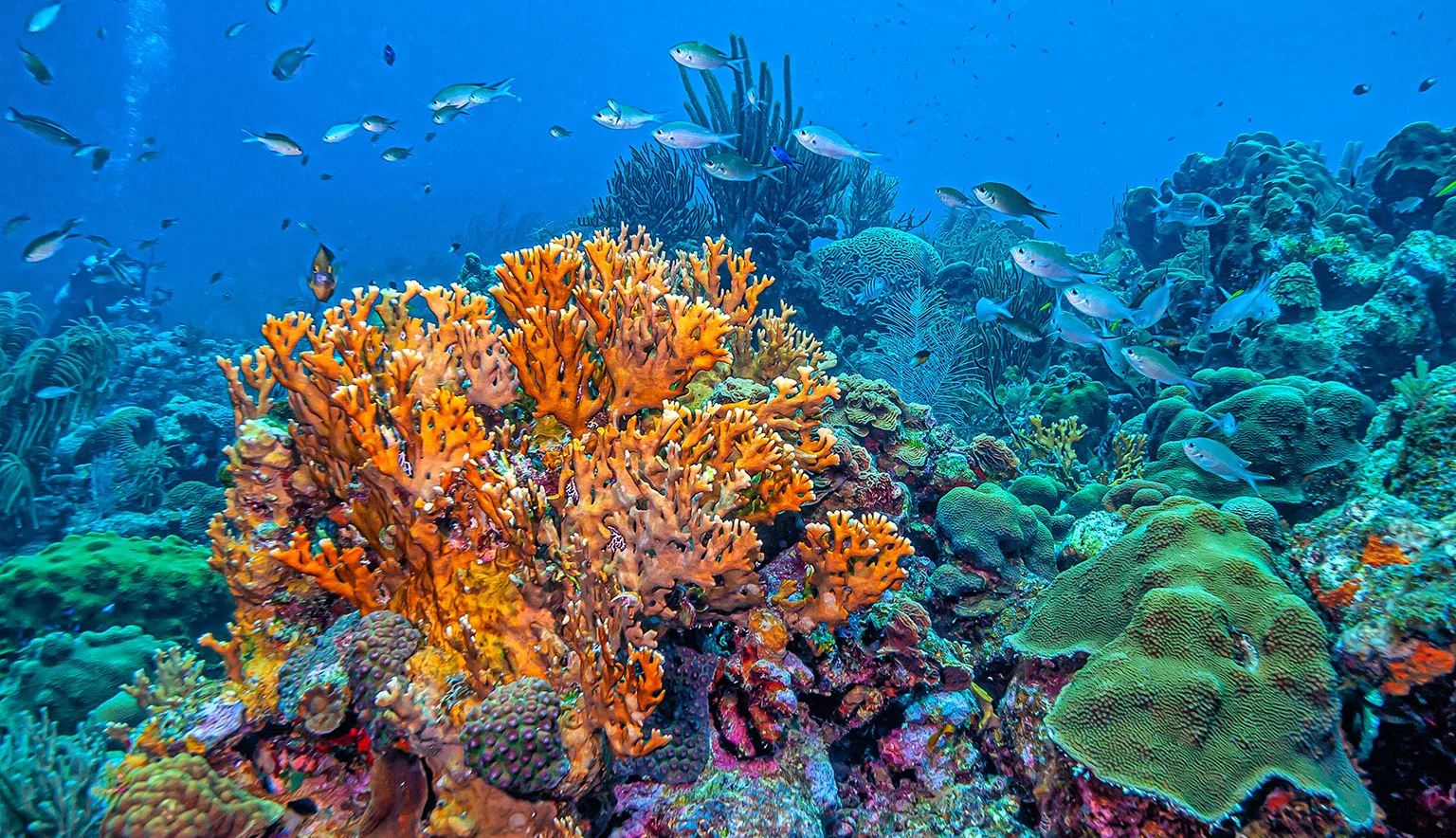The island’s star attraction, the Bonaire National Marine Park, was established in 1979 as a protected area that covers a whopping 6,672 acres and a depth of 200 feet. Encircling the entire island, the park’s mission is to protect and manage the land’s natural, cultural, and historical resources, whilst allowing ecologically sustainable use for the benefit of future generations.
This resource is not only unique but extremely precious, consisting of 2,700 hectares of coral reef that juts and twists like modern art, fluttering seagrass beds, tangled mangroves, and flocks of colourful and teeming reef fish.
As a result of Bonaire’s nearly 50 years of protective measures, the flora and fauna and wildlife in the park are some of the healthiest in the region, alongside the coral reefs, which are the least degraded in the entire Caribbean. The park is also home to endangered species, such as sea turtles, conch, and sharks, alongside globally threatened ecosystems, making the area’s marine biodiversity unanimously recognised as having outstanding universal value.
Additionally, the park is a heaven-like oasis for divers and snorkelers looking to explore an underwater nirvana bursting with marine life. From massive, slinking morays to the tiddly yet eye-catching Flamingo Tongue Snail, to spiny and scuttling lobsters, the Bonaire National Marine Park is an underwater playground that offers unforgettable encounters.
As the ecosystem is so precious, conservation is taken seriously. Before you strap on your oxygen tank and fall backwards into the turquoise waters, divers new to Bonaire must partake in an orientation and head to a designated dive shop to get familiar with weights, conditions, and park rules.
This is to ensure the waters remain a safe haven for marine life that bubble and glide within, as reefs in particular take millennia to grow and only seconds to carelessly destroy. The future of those who call the park home depends on the care and diligence of those visiting.



























